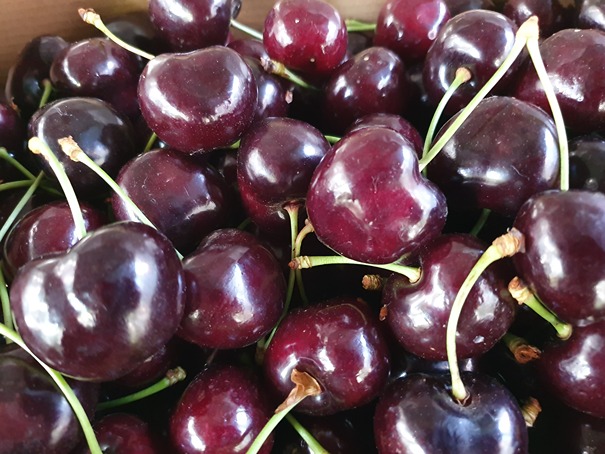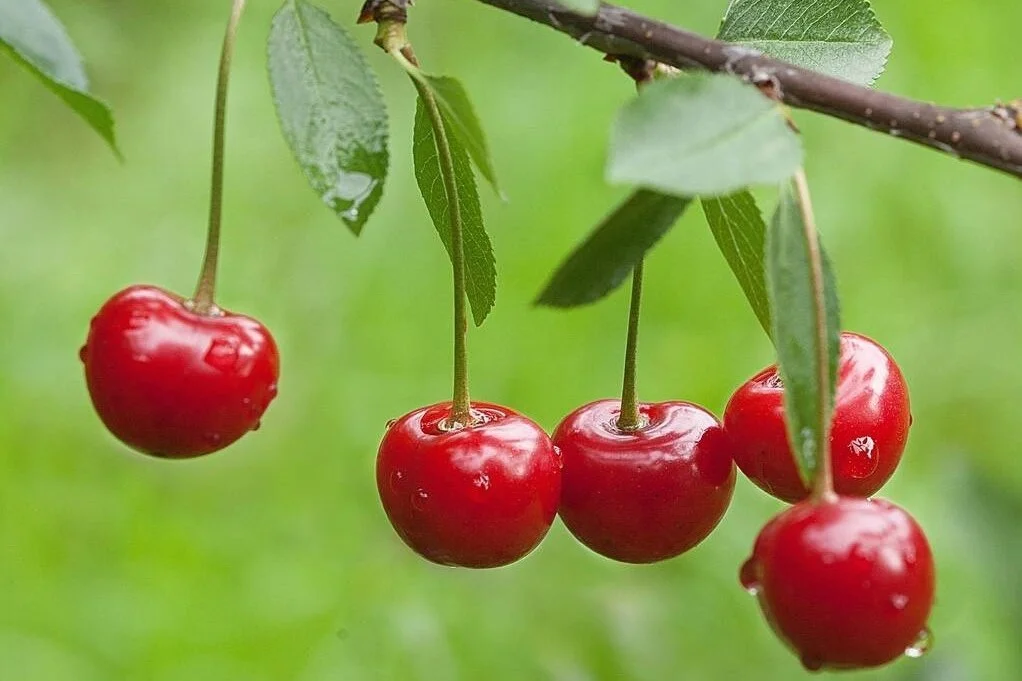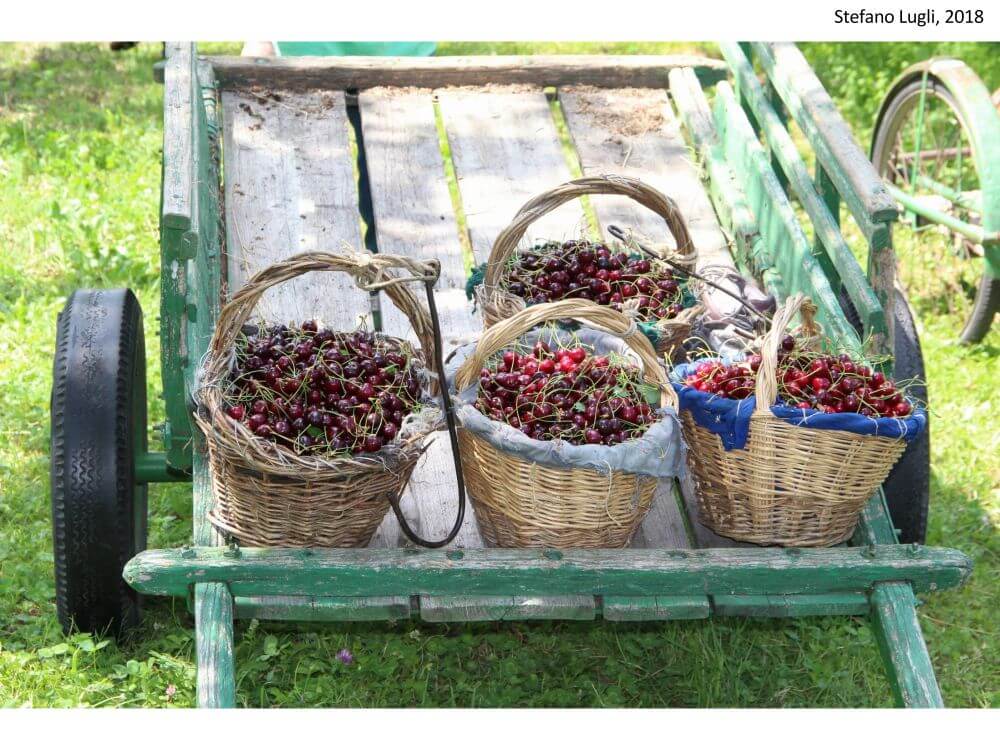
The cultivation of the Moretta di Vignola cherry has ancient and well-established origins in the Emilia region. Its presence in the Modena area dates back to the end of the 19th century with a rapid commercial spread. The soil and climatic conditions of these lands contributed to making the variety, unique in the national varietal panorama, a true excellence of Vignola production and, thanks to the commitment of farmers, it has long been one of the territory's main sources of income.
Since the 1980s, with the advent of new, more productive and profitable varieties, the Moretta has gradually disappeared and plant renewals have failed, until it has been relegated to the role of a niche variety at serious risk of extinction. More recently, thanks also to a safeguarding action carried out by Slow Food, the Vignola 'tenerina' has not only begun to be cultivated again, but has also become one of the symbols of Emilian biodiversity and typicality, with a consequent recovery of interest and consumer consensus.
Characteristic traits
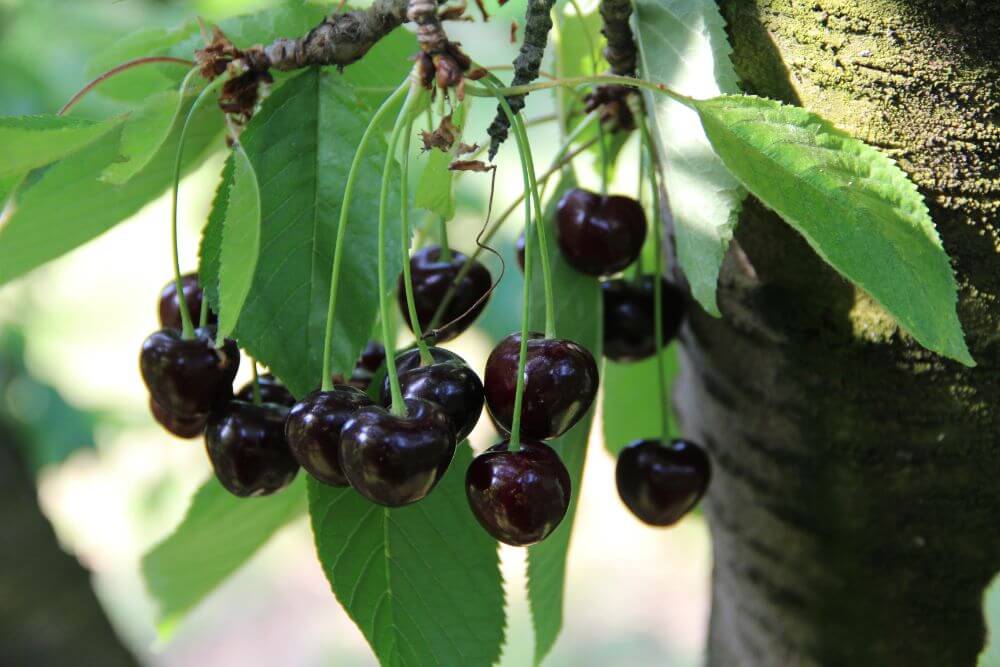
The Moretta di Vignola ripens between the end of May and the first ten days of June in the plains, and lasts until the end of June in the hills and mountains. The drupes, carried by a long stalk, are medium to small in size, uniformly spherical and symmetrical in shape. The skin is thin and not very resistant to handling. It is shiny and almost black when fully ripe. The flesh is tender, very juicy, dark blackish red in colour. The flavour is sweet, slightly sour, very aromatic, very pleasant and unmistakable. Thanks to its content of sugars, vitamins and mineral salts, it is a food of high nutritional value, also very suitable for the nutrition of children, the elderly and sportsmen.
A concentrate of polyphenols
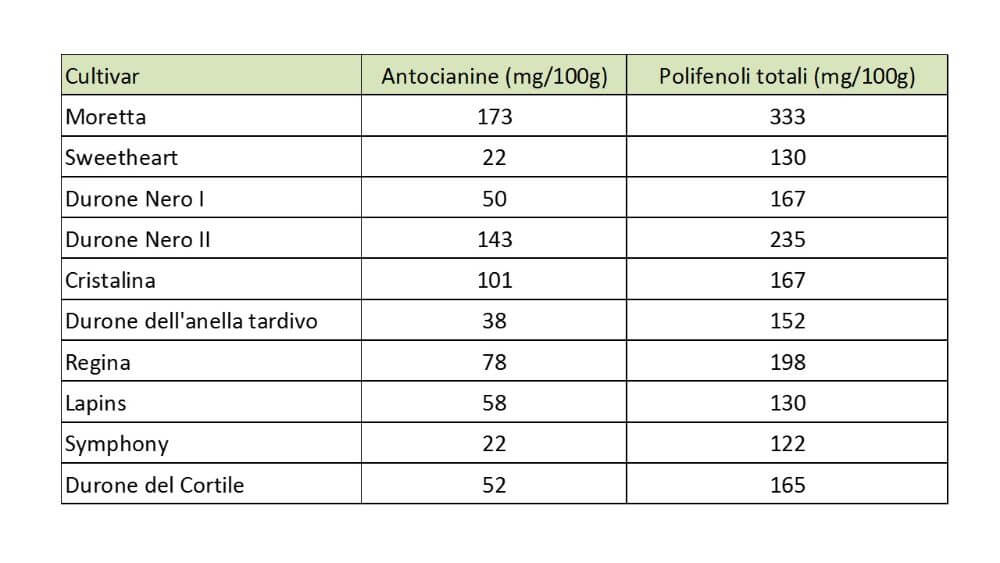
Table 1 shows a varietal comparison from which it emerges that the polyphenolic substance content of Moretta di Vignola compared to other cherry varieties widespread in the area is vastly superior to all the varieties tested. Considering the results obtained, it is also necessary to emphasise that the Moretta has phenolic substance contents that are absolutely comparable to those of fruits that are better known for their beneficial properties, such as small red fruits (blueberries, blackberries, etc.).
In addition, considering the composition of the anthocyanin fraction, it was noted that the substances most represented in percentage terms are cyanidin derivatives, followed by peonidin and delphinidin ruthenosides, thus generating a unique profile (biochemical fingerprinting) that distinguishes the 'Moretta' from all other cultivars considered.
Furthermore, these characteristics are of particular importance considering that the different classes of phenolic substances found in the fruit increase their activity through synergistic action.
In old plantings it gives its best
The composition and content of polyphenols in cherry extracts depend strongly on genetic variability and are influenced by climatic, agronomic and post-harvest conditions. To this end, an experimental trial conducted in the Vignola area by Bertelli et al. (2019) compared the functional value of Moretta di Vignola in different types of planting:
- Old plants (50-90 years old) with natural training, on Franco rootstock and with a density of 80-100 plants/ha;
- Traditional plants (20-40 years of age) with volume (pot) or wall (palmette) training on Colt rootstock and with a density of 400-500 plants/ha;
- High density plants (10 years of age) with wall training with spindle or columnar axis shape on dwarfing rootstock Gisela 6 and with a density of 1,000-2,000 plants/ha.
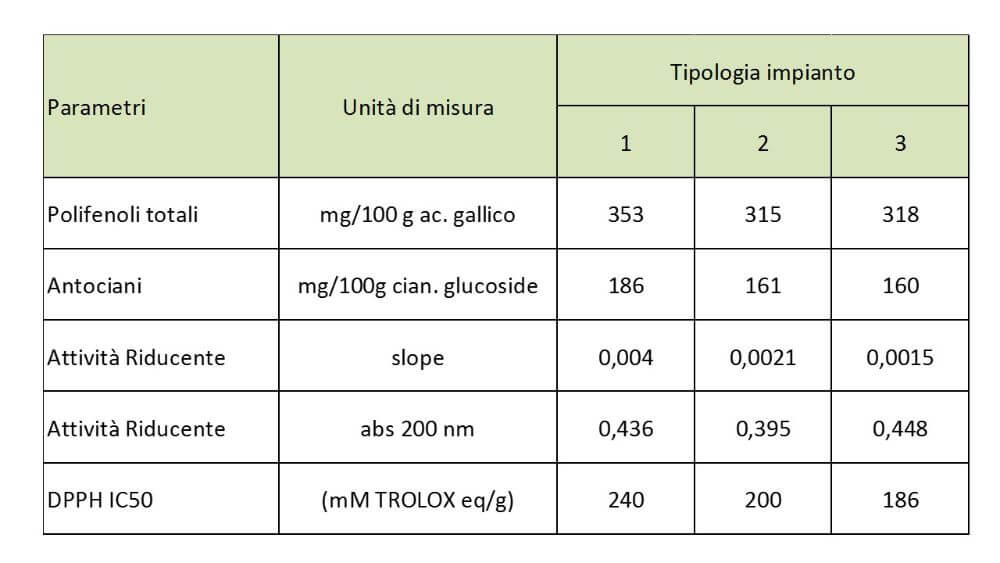
The data in Table 1 show the contents of phenolic substances and the measures of antioxidant activity, from which it can be seen that naturally grown Moretta (type 1) has higher contents of both total polyphenols and anthocyanins than fruits from type 2 and type 3, in which case the differences appear marginally significant. Cherries from natural cultivation also appear to have the highest antioxidant power when measured by the DPPH method.
Bioactive compounds useful in the prevention of neurovegetative diseases
A study conducted by the Unimore research group coordinated by Vitale explored the role of bioactive compounds in Moretta sweet cherries against neurodegeneration (PD models - Parkinson's disease) and oxidative stress. The phytochemical profile of the fruit extracts was analysed in terms of phenolic compounds by means of high-performance liquid chromatography (HPLC) coupled with UV/DAD and ESI-MSn detection.
An anthocyanin-rich extract (ACE) from Moretta cherries was fully characterised and tested to assess its modulation of viability and antioxidant effect in murine microglia (BV-2) and human neuroblastoma (SH-SY5Y) cells; to evaluate its neuroprotective effects against neurotoxin-induced cytotoxicity in the cellular PD model; to study its neuroprotective effects in the Drosophila melanogaster model of chemically induced PD; to examine its ability to improve the resistance of Caenorhabditis elegans to heat stress.
Based on the results obtained (Filaferro, 2022), the authors hypothesise that the consumption of a standardised extract of this local cherry tree variety in a nutraceutical product may offer therapeutic benefits to humans in order to prevent or delay acute and chronic diseases, such as neurodegenerative diseases and in particular PD, at the basis of which are oxidative-inflammatory processes.
Bibliography
Moretta di Vignola, da nicchia ad alimento funzionale / Bertelli, Davide; Marchetti, Lucia; Plessi, Maria; Soragni, Fabrizia; Bellelli, S.; Bergonzoni, L.; Dondini, L.; Grandi, M.; Venturi, Silvia; Etiopi, C.; Monari, W.; DE BERNARDI, Alberto; Quartieri, G.; Lugli, S.. - In: RIVISTA DI FRUTTICOLTURA E DI ORTOFLORICOLTURA. - ISSN 0392-954X. - 3:(2019), pp. 37-41.
Disclosing the Antioxidant and Neuroprotective Activity of an Anthocyanin-Rich Extract from Sweet Cherry (Prunus avium L.) Using In Vitro and In Vivo Models / Filaferro, M.; Codeluppi, A.; Brighenti, V.; Cimurri, F.; Gonzalez-Paramas, A. M.; Santos-Buelga, C.; Bertelli, D.; Pellati, F.; Vitale, G.. - In: ANTIOXIDANTS. - ISSN 2076-3921. - 11:(2022), pp. 211-211.
Cherry Times - All rights reserved









